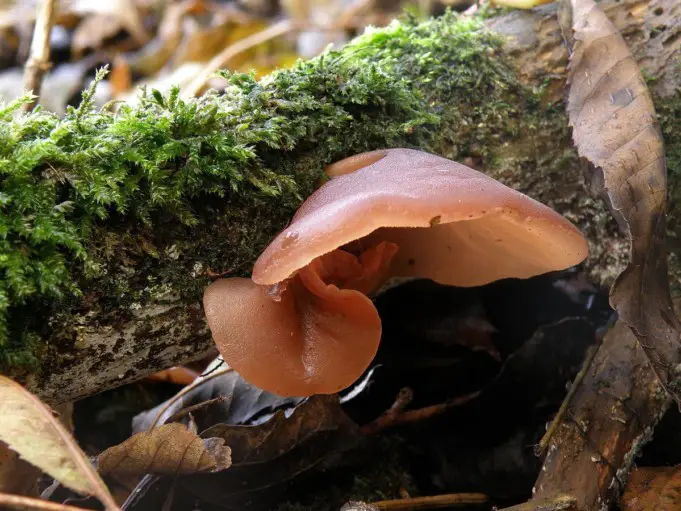Jew’s Ear is a fungus that grows on dead branches. The scientific name of this fungus is Auricularia auricula-judae. Judas’s ear belongs to the family of auriculariaceae.
It is a medicinal mushroom whose appearance reminds us of the human ear. Auricularia auricula-Judae is quite soft and flexible, but if allowed to dry it becomes hard and brittle but takes its anterior aspect to moisten again.
Judas’s ear can be found in different colors, from black to green. The color of this medicinal mushroom varies based on the area where it grows. Sand fungi reproduce by spores. The fungus has a healing underground part and we can see.
The base, the buried part consists of the mycelium, and is attached to the outside of the fungus. The underground part is year-round and exterior begins to appear during the first months of autumn to spring.
Whole fungus is collected during the fall, winter and spring. Judas’s ear is an edible mushroom, so you should keep it as fresh as possible. If there is to be consumed at the time of pick up should be kept in glass jars hermetically sealed.
Auricularia auricula-Judae is composed of antibiotic substances, and knows this plant medicinally for centuries. Which has been used in many ways, whether in natural or homeopathic pharmaceuticals.
It has been used Judas’s ear to calm inflamed parts, especially tonsillitis and sore throat. Also to cure tumors throughout the body even in ocular inflammation. It is considered a good antibiotic and anti-inflammatory.
Recipes for this herb:
Cooking: Place the ear of Judas to soak in water or milk and bake time to soften (usually between 10 and 30 minutes). While still warm gargle with the preparation, and serves as an anti-inflammatory. Anti-inflammatory
Cuisine: anti-inflammatory and can be eaten ears of Judas alone or in salads.












